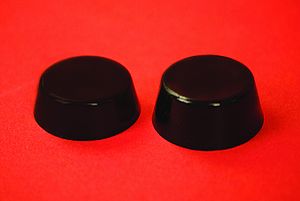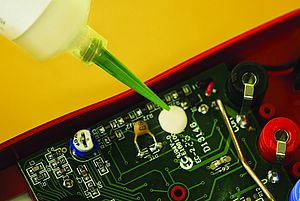Master Bond. Changes in temperature can have an enormous impact on the performance properties of epoxies and other thermosetting polymer systems. Prior to curing, an epoxy consists of a resin and a curing agent. When polymerization occurs, the entity becomes an organized crystalline type structure in what is sometimes referred to as a “glassy state.” In this state, the molecules are able to vibrate but are otherwise locked in place. As the temperature rises, the molecules are able to move more freely and the material gradually starts to soften. As the temperature continues to rise, the polymer eventually experiences a profound state change to a more pliable, rubbery state. Although this state transition takes place gradually over a range of temperatures, the glass transition temperature range (Tg) is often designated by a specific temperature. The actual glass transition temperature range depends upon the molecular structure of the material, the testing method, sample preparation, the cure schedule, and the degree of cure.
Epoxies and Glass Transition Temperature
Changes in temperature can have an enormous impact on the performance properties of epoxies and other thermosetting polymer systems
- by Master Bond Inc.
- October 15, 2019
- 710 views
















































